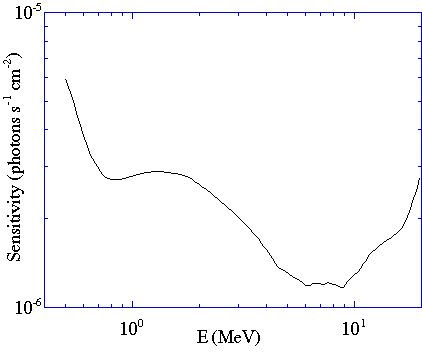
THE PERFORMANCE OF Ge COMPTON SPECTROMETERS FOR
THE STUDY OF ASTROPHYSICAL GAMMA-RAY LINES
P. Jean, J.E. Naya, P. von Ballmoos
Centre d'Etude Spatiale des Rayonnement, UPS-CNRS, Toulouse, France
Abstract
Up to today, relatively small advantage has been taken of the fundamental astrophysical information contained in gamma-ray lines. The reason for this is the modest energy resolution of the existing instruments. High resolution spectroscopy will be one of the major goals of the next generation of space borne gamma-ray telescopes.
In this paper we present the estimated performance of Compton spectrometers using high-energy resolution solid-state detectors. Recent technological advances in germanium detector-arrays have made possible the determination of the gamma-ray interaction position to within centimeters or even millimeters. The combination of two such detector layers can make a Ge Compton spectrometer with outstanding performance. With currently available technology one can envision an instrument with a geometric surface of 500 cm2 per layer, an angular resolution of 0.5° at 1.8 MeV within a field of view of 57° FWHM, an energy resolution of 0.2% FWHM and a sensitivity of 2 10-6 photon s-1 cm-2.
We have modeled the efficiency and background for Ge Compton spectrometers of various sizes and geometries. While the efficiency is estimated with analytical and Monte-Carlo methods, empirical data has been also used to model the continuum background for the radiation environment in high earth orbit; the background is shown to originate mainly from cosmic diffuse gamma-radiation, cosmic-ray protons and spacecraft emission. The analysis of the different components has lead to several techniques for background reduction.
We show that Ge Compton spectrometers can be custom tailored to a broad
spectrum of scientific objectives : Instruments of this type are able to
perform spectroscopy and imaging of gamma-ray lines sources, i.e. determine
the distribution of positrons, 26Al, 44Ti, 44Na, 60Fe, 12C and 16O nuclei
in our Galaxy.

3-sigma narrow-line on-axis point source sensitivity estimated for a
500 cm2 Ge-Compton Telescope. (see also, Jean et al, 1996, A&A Suppl.
Series, vol. 120, 4, p. 673 )